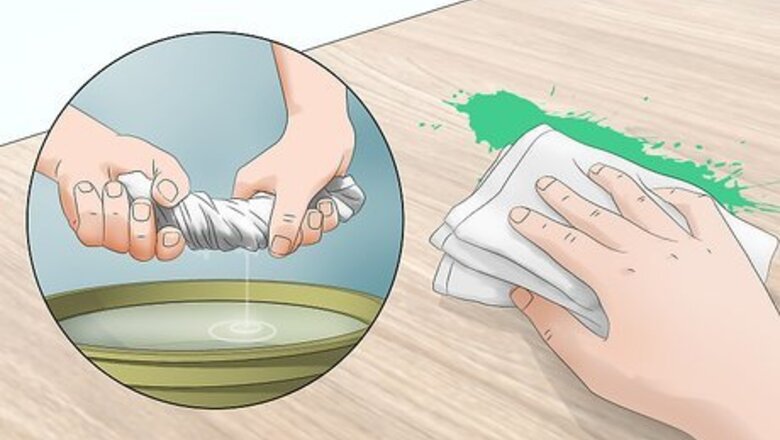
views
Removing Paint Marks
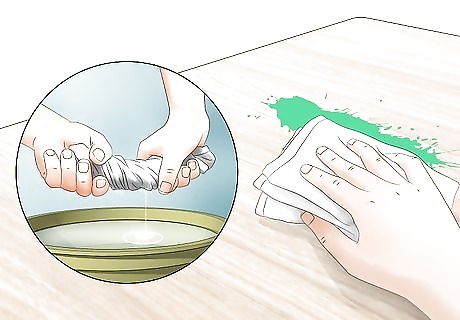
Remove fresh latex paint with water A spot of latex paint can usually be removed by wiping it up with a soft, water-soaked rag. Soak a soft, clean cloth rag in warm water. Wring out some of the excess water to prevent the rag from dripping over unaffected areas. Scrape the paint away Wipe away the spot of paint. You may need to rinse and re-soak the rag several times to get all of the paint up. Wipe the wood dry with a separate, dry rag.
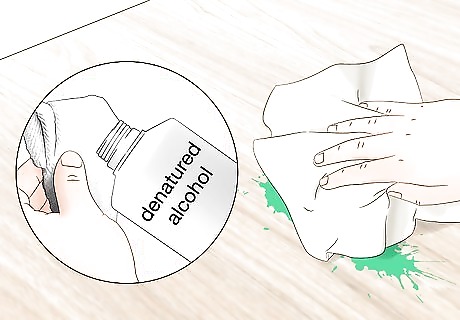
Use denatured alcohol if the water does not work. If you have a latex paint splatter on your wood that you cannot wipe away with plain water, wipe it away with denatured alcohol, instead. Apply enough alcohol to a clean rag to dampen it without making it dripping wet. Pass the alcohol-soaked rag over the paint spot to remove it. Rinse, resoak, and repeat as needed. Dry the spot with a clean, dry rag when finished.
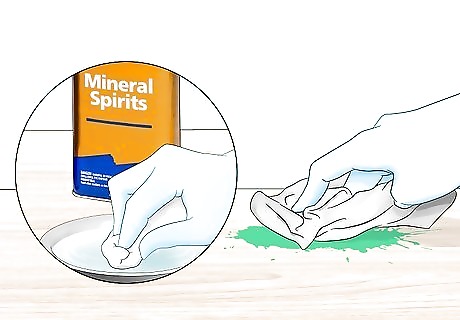
Remove fresh oil-based paint with mineral spirits. Oil-based paint will continue clinging to the wood if you use plain water, so wipe it away with a soft rag dabbed in mineral spirits. Dip a soft, clean rag into a small dish of mineral spirits. Instead of soaking the entire rag, only soak the area you plan on bringing into contact with the paint splatter. Wipe up the paint by passing the mineral spirit over the splatter. Rinse and resoak as needed until all the paint has been removed. Dry the area with a separate dry rag.
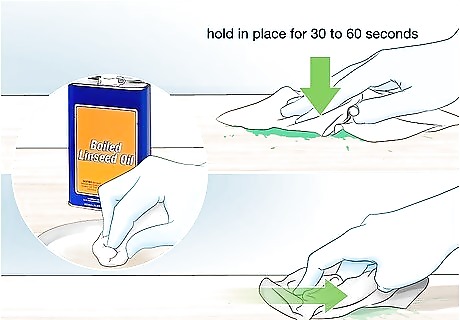
Remove dried paint with boiled linseed oil. Dry spots of paint can be softened by soaking and rubbing them away with boiled linseed oil. Soak a clean rag in boiled linseed oil. Press the linseed oil rag against the paint spot and hold in place for 30 to 60 seconds. This permits the oil to soak into the paint. Wipe away the softened paint with your linseed oil soaked rag. Dry the area with a separate dry rag.
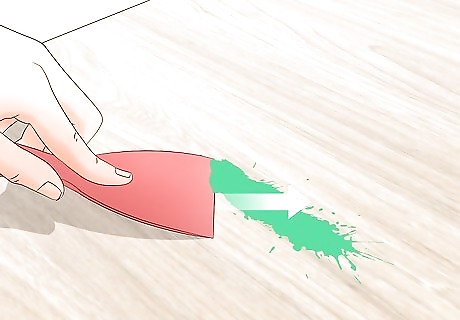
Use a putty knife, if necessary, for stubborn dried spots. If you cannot wipe the paint away even after softening it with boiled linseed oil, carefully use a putty knife to scrape beneath the splatter and lift it off the wood.

Strip residue with a linseed oil paste. Any dried paint residue that remains can be removed by rubbing it with a paste made of boiled linseed oil and rottenstone. Combine enough boiled linseed oil and rottenstone in a small disposable dish to form a thick paste. Use a disposable wooden chopstick to stir the ingredients together. Scoop some of the paste onto a clean rag and rub the paste into the wood along the grain. Wipe away the grain using another clean rag.
Removing Paint with Heat
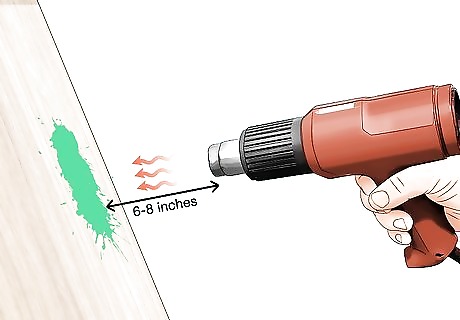
Hold a heat gun near the surface of the wood. Position the heat gun 6 to 8 inches (15 to 20 cm) above the painted wooden surface after you switch the heat gun on. Use an electric heat gun or electric paint remover. A blowtorch will also provide the necessary amount of heat, but blowtorches come with a greater risk of scorching or setting the wood on fire, so they are not recommended. Wear protective gloves and goggles as you work with the heat gun. Do not let the heat gun come into contact with the wood or come too close to the wood. Doing so may result in scorch marks or fire.
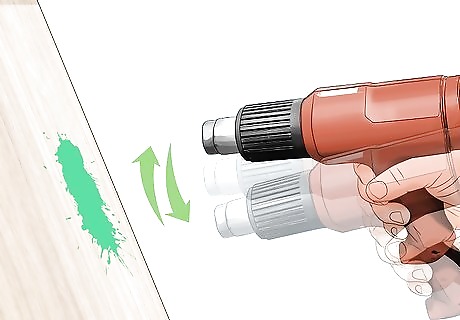
Slowly move the heat gun over the surface. Pass the heat gun over the surface of the section of wood you are currently working on. Continue passing it side-to-side and up-and-down without ceasing. Do not let the heat gun linger in one spot for a prolonged period. Doing so will cause the wood to burn and potentially catch on fire.
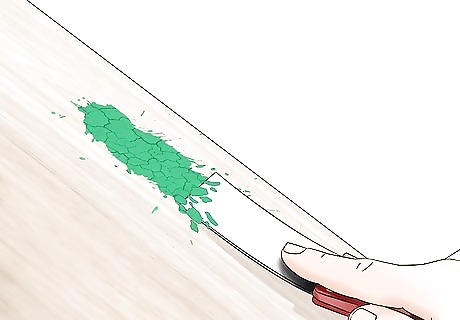
Scrape the paint up as it wrinkles. Once the paint begins to bubble and wrinkle, immediately scrape the paint up with a broad paint scraper. If possible, continue to heat the paint with the heat gun in one hand as you scrape up bubbling paint with your other hand. If you have difficulty balancing both tasks, though, switch the heat gun off temporarily and scrape up any heated paint immediately.
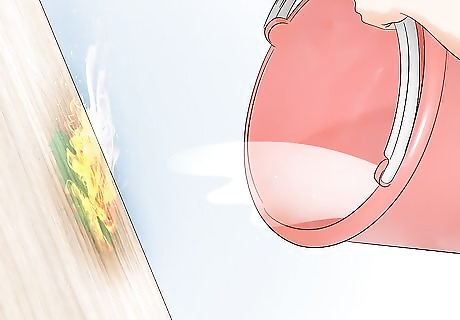
Stay calm if a fire starts. Even though it is possible for the wood to catch fire, these fires are usually small at the start and can be put out safely as long as you think clearly. A small flame can usually be put out by smothering it with the flat side of your paint scraper. Keep a bucket of water nearby as you work. If a fire starts to catch and cannot be smothered out, quickly soak it with the water.
Removing Paint with Force
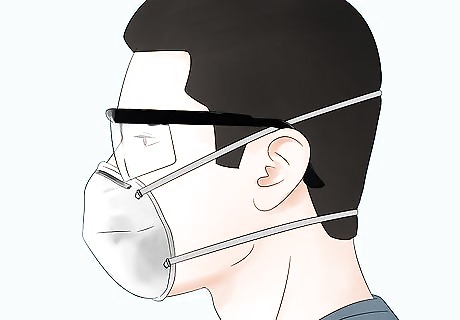
Protect yourself. Wear safety goggles and a face mask to protect yourself from paint and wood dust as you sand, regardless of the sanding method you use.
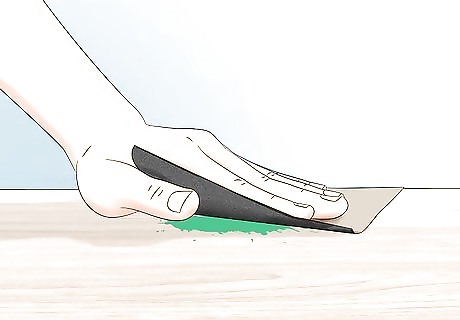
Sand the paint off by hand when possible. When removing paint from a crack or crevice or stripping it from a small, delicate wooden object, you should sand the paint off by hand. Mechanical sanders use considerable force and can damage delicate pieces. Moreover, they can be difficult to use on small, confined spaces. Use coarse, open-coat sandpaper since other types may clog with paint and wood dust too quickly. Sand with the grain of the wood instead of against it. Decrease to a medium grit paper once you can see the grain of the wood peeking through the paint. Decrease to a fine grit when small bits of paint are all that remain.
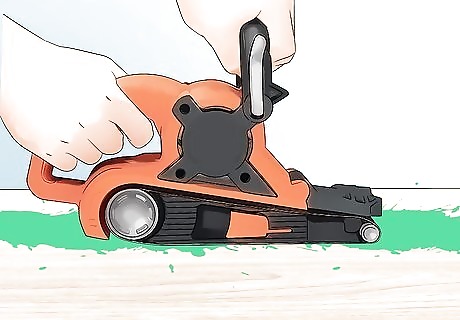
Switch to a mechanical sander for larger jobs. For larger areas of painted wood, including large pieces of wood furniture, large wooden chests, or wood trim, rely on a mechanical sander to save time. Choose between a mechanical hand sander and a power sander. A hand sander will be a little gentler and makes a good option if you want to preserve more of the wood beneath the paint. A power sander will finish the job faster, though, making it a good choice for especially large projects. Belt, disk, and drum sanders are all good options worth considering when picking a power sander. Use coarse, open-coat sandpaper on your mechanical sander since less coarse options tend to clog up with paint and wood dust too easily. Always sand with the grain of the wood rather than against it to minimize the amount of damage to the wood. Switch to a fine grain sandpaper, if desired, once the majority of the paint has been sanded off and only a few small specks remain.
Removing Paint with Chemical Paint Strippers
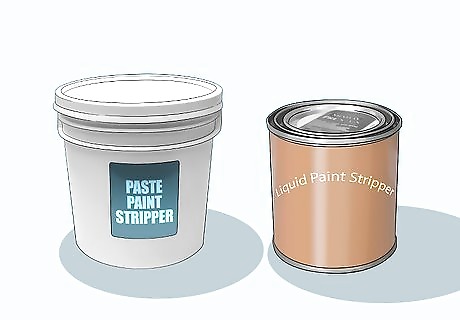
Choose the right type of paint stripper. Look for a paint stripper labeled for use with the type of paint you want to remove. Also choose between a liquid or paste paint stripper. Liquid chemicals are often applied in spray form and are usually used to clean coatings or a couple of layers. Paste chemicals are brushed on and are used to strip many layers of paint. If you need to remove 10 layers or more, choose a paste. Read the instructions thoroughly before use. While the application procedure is the same for most chemical paint strippers, the exact details may vary. Always follow the instructions that come with the paint stripper.
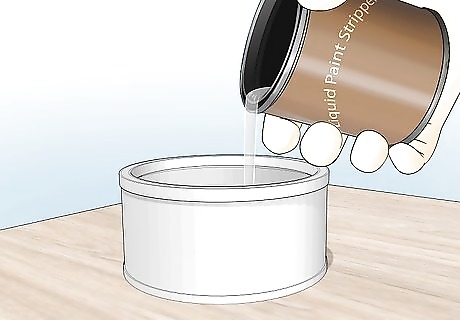
Pour a small amount of paint stripper in a wide-mouth metal can. Pouring a small amount in a small can makes it easier to use the paint remover. If possible, use a can with a plastic resealable lid.

Brush the paint stripper on with a paint brush. Use a broad flat paintbrush to apply the chemical thickly and evenly over the surface of the painted wood. Brush the paint stripper on in one direction. Do not brush over areas that have already been covered by paint stripper.
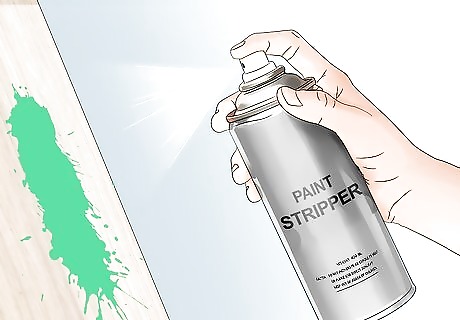
Alternatively, spray the paint stripper on. If using an aerosol paint stripper, point the nozzle of the bottle roughly 4 inches (10 cm) away from the surface of the painted wood and apply the chemical in an even, thick layer. The chemical will create a foaming, clinging layer.
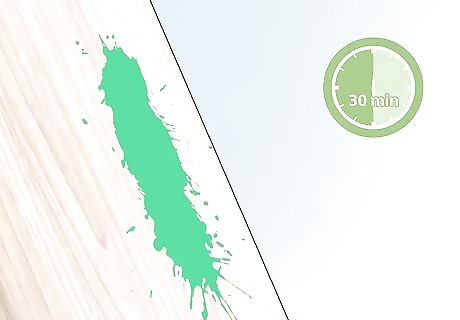
Let sit for as long as directed. Usually, the paint remover should be left on the surface for 20 to 30 minutes, but exact times may vary. Keep the windows and doors of the room open to prevent potentially harmful fumes from building up as the chemical sits.
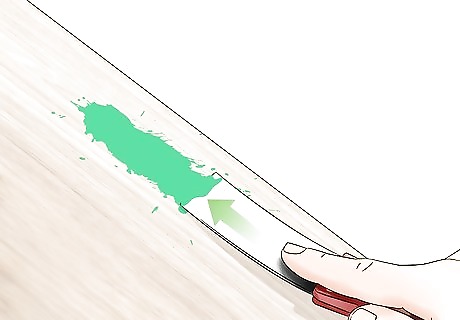
Test the paint. Rub the blade of a paint scraper over the surface in a circular motion. If the scraper cuts into the paint, the chemical has worked correctly. Make sure that the scraper you use is chemical-resistant.
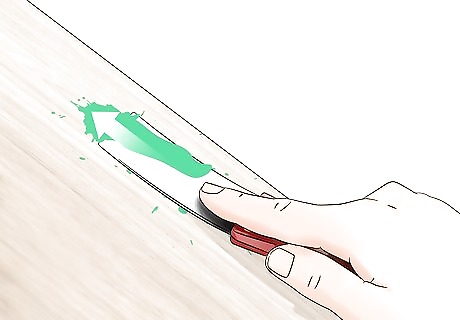
Scrape the paint off with a metal scraper. Glide the paint scraper beneath the softened paint to peel it away. Remove as much as possible with the first few passes. Work in one direction.
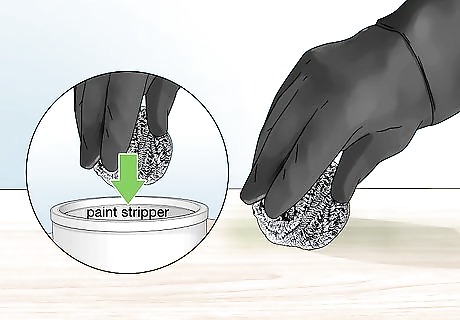
Touch up the surface with soaked steel wool. If some paint still remains, soak medium-grade steel wool in a small amount of paint remover and scrub those spots until they lift up. Old rags or abrasive scouring pads will also work.










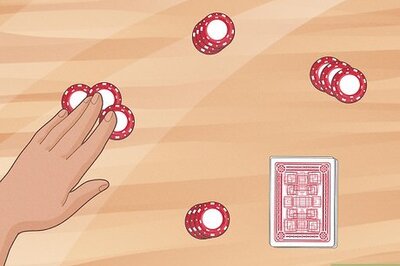









Comments
0 comment